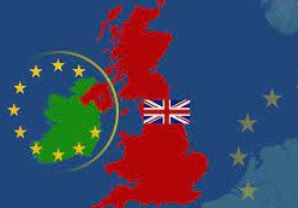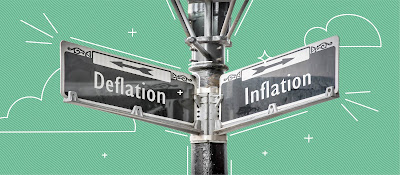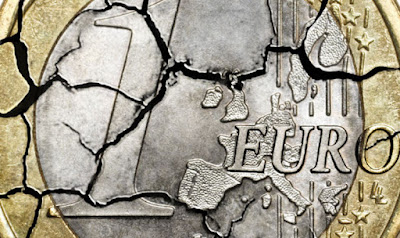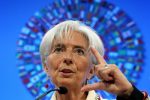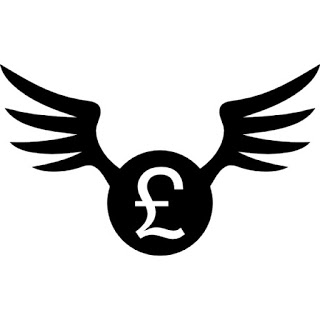 The gains the US dollar registered in the second half are being pared, but it is sterling’s strength that stands out. It is difficult to attribute it to Obama’s push against Brexit, but there does appear to have been a change in sentiment.
The gains the US dollar registered in the second half are being pared, but it is sterling’s strength that stands out. It is difficult to attribute it to Obama’s push against Brexit, but there does appear to have been a change in sentiment.Sterling is the best-performing currency not only today but for the past five sessions, rising 1.25% against the US dollar to its best level since mid-February. The next target is $1.4600 and $1.4670, the high from early February. Sterling is rising against the euro for the eighth consecutive session. The next target for the euro is near GBP0.7685, which corresponds to the 38.2% retracement of the euro’s rally off the mid-November low near GBP0.7000.
However, investors need to be careful extrapolating too much from the decline in the benchmark three-month volatility and call-put skew. The issue here is the calendar. Three-month optionality goes well beyond the referendum, which has now moved within the two-month window. The pressures have been squeezed into two-month duration. Two-month sterling volatility is at new six-year highs today, reaching more than 14.5% earlier, surpassing three-month volatility which has fallen below 13%.
Similarly, the call-put skew (25 delta risk-reversal) is being reduced in the three-month options and rising sharply in the two-month period. In the three-month period, the premium for sterling puts over calls finished last week at 4.45% and is now quoted near 3.68%. The 2-month skew favors sterling puts by 3.8% compared with 1.22% before the weekend.
The news stream remains light ahead of tomorrow’s conclusion of the FOMC meeting and Thursday’s BOJ conclusion. Many observers seem to be exaggerating how important the former is for the latter. Recall that the Fed’s rate hike in December, and indications at the time that most at the Fed thought four hikes this year would be appropriate, did not deter the BOJ from adopting negative interest rates at the end of January. Nor did the ECB easing in early December preclude the Fed from tightening a fortnight later.
The US reports March durable goods orders and February Case-Shiller house price index. Durable goods are the last piece of data for economists before the preliminary Q1 GDP report. It is unlikely to alter the view that the US economy slowed in Q4 15 and slowed further in Q1 16. However, the early April data is looking better. Today Markit will provide an initial estimate for April services PMI and the composite, both of which are expected to tick higher. Apple will report its earnings later today.
Better than expected earnings are helping lift European shares after the MSCI Asia-Pacific Index edged lower for the third consecutive session. That said, many national markets in Asia, including China, Hong Kong, Taiwan, Korea, and India advanced. Japan slipped, and notably so did Malaysia. Mitsubishi Motors remains under pressures amid a further admission today that it has been improperly testing fuel economy of its autos since 1991. The shares have fallen by around 50% since the scandal first broke last week.
News that 1MDB missed a coupled payment sparked cross default clauses. The Malaysian ringgit is off 0.4% today, making it the worst performing emerging market currency. Although South Korean shares advanced 0.25%, the 2.7% year-over-year growth in Q1 GDP was in line with expectations, but the weakest since Q2 15, and the won is the second weakest emerging market currency today, off 0.25%.
Europe’s Dow Jones Stoxx 600 is snapping a three-day decline and is up about 0.5% near midday in London. Only health care and information technology shares are lower among the various industry group. Financials are the strongest with a 1.4% rise and energy up a close second. Several European companies, including Bayer, BP, Orange, Standard Chartered and Swedbank all reported better than expected earnings/revenue data. Italian and Spanish banks are also doing well.
The euro extended yesterday’s recovery. A move above $1.1310 would see $1.1330-$1.1340 today, but we suspect that the market will turn more cautious now ahead of the FOMC. Support is pegged near $1.1260. The dollar marginally poked through the JPY110.70 area we identified yesterday as an important chart area. News that Japan’s largest pension fund (GPIF) is considering hedging some of its overseas assets back into yen (requires buying yen) seems large to confirm what many have already taken on board–that is much of the Japanese outbound portfolio flows have less direct impact on the yen’s exchange rate because they are hedged. If JPY110.70 marks the dollar’s near-term downside, the upside extends to the JPY111.30-JPY111.40 area.
The dollar-bloc currencies are firm. The Canadian dollar is consolidating within last Friday’s range. The Australian dollar is trading above yesterday’s highs, but there is little momentum. Resistance is seen in the $0.7750-$0.7760 area. The New Zealand dollar fell 31% in the second half of last week but is moved higher yesterday and today. Resistance is seen near $0.6900. Most do not expect the RBNZ to cut rates this wee, though many see a rate cut in the coming months.
Tags: Brexit,newslettersent






















